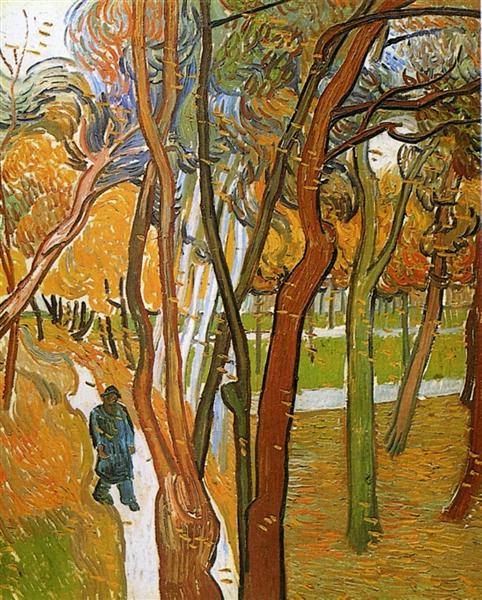
This originally appeared at Good Faith and the Common Good
by Sam Candler
It’s about walking.
In the fourth century A.D., a woman named Egeria, or Etheria, took a long pilgrimage to the Holy Land, and beyond. She walked a lot. Apparently, she wrote a detailed letter back home describing her travels, a letter called Peregrinatio Etheria, the “walking,” or the “pilgrimage,” of Etheria. In particular, she described what the fourth century Christians in Jerusalem did on the Sunday before Easter. They walked.
From holy site to holy site, they walked. So began the observance of processing on the Sunday before Easter. It’s about walking.
Christians have been walking ever since. Indeed, people of faith, and people of “no faith” walk. Something happens when we walk. Something holy and inspiring occurs when we walk.
The famous thinker, Augustine of Hippo, is known for his answer to an unsolvable philosophical paradox. He said, “Solvitur ambulando,” “It is solved by walking.” Many a great thinker has discovered the same thing. Walking solves problems both intellectual and psychological.
In May, 2014, an article in the Journal of Experimental Psychology showed that walking—as opposed to sitting—significantly improves creative thinking. Charles Dickens and William Wordsworth knew that a long time ago. Wordsworth was known for rambling all over Europe in all kinds of weather, composing most of his poetry while walking. It is said that even in his 60s, Wordsworth walked twenty miles and day, and that he probably walked 180,000 miles in his life.
Jean Jacques Rosseau, in his Confessions of 1782, wrote “I can only meditate when I am walking. When I stop, I cease to think; my mind only works with my legs.” Even the atheist philosopher, Frederick Neitzsche wrote, “All truly great thoughts are conceived while walking.”
That is why we Christians walk, too. It is why we take time to walk. Of course, we actually walk throughout the year, not just on Palm Sunday. We walk on the labyrinth, for instance, where God’s spirit speaks to us without words. Just yesterday, I enjoyed walking around the Cathedral Farmer’s Market. I had no particular goal, or object, in mind, except to walk around, to saunter, to meander. To be present in the moment. And I ended up finding holy people there.
The beautiful Buddhist monk, Thich Nhat Hanh, has written about “Walking Meditation” as a form of prayer. He said, “Many of us walk for the sole purpose of getting from one place to another. Now suppose we are walking to a sacred place. We would walk quietly and take each gentle step with reverence. …. In our daily lives, we get lost in our computer or in our worries, fear, or busyness. Walking meditation makes us whole again. …Walking meditation unites our body and our mind.” (Thich Nhat Hanh, “Walking Meditation,” Lion’s Roar, March 20, 2015).
There is a spirituality, a deep spirituality, that occurs in walking. It is the reason Jesus walked into Jerusalem. It is the reason some pilgrims walk the el Camino de Santiago de Compostela. It is the reason we walk today. We find God in our walking.
A simple Palm Sunday Procession, perhaps around one’s local church, is a relatively short one. We don’t go a long way, physically; but we can go an incredibly long way, spiritually. It’s about walking. Spirituality is about walking.
God comes to us when we walk. This day, Palm Sunday, begins something called “Holy Week” for Christians. But we might better call this week, “Holy Walk.” This week is “Holy Walk.” We have blessed palms and shouted “Hosannah!” But, if we are following the walk of Jesus, we know that our shouts of joy can turn embarrassingly into shouts of betrayal, too.
Our beautiful walks of glory can also take us walking through the valley of the shadow of death. Christians hear the painful Passion of Christ on Palm Sunday, and we will observe that Passion again on Good Friday. That’s what true walking does. True walking takes us everywhere, from joy to pain, and from death to life. Yes, the walk will conclude next Sunday, a week from today, with resurrection and new life. But the walk will take us through death first. That’s what faithful people do when we walk. We touch every facet of human life; we try to walk the full way of Christ.
The naturalist, Henry David Thoreau, did not always get etymological details right, but he got walking right. He knew how to walk and how to enjoy the presence of God in the world. Listen to how he talks about walking, and how he explains the definition of the word, “saunter.” He wrote,
“I have met … but one or two persons in the course of my life who understood the art of Walking, that is, of taking walks—who had a genius, so to speak, for sauntering, which word is beautifully derived ‘from idle people who roved about the country, in the Middle Ages, and asked charity, under pretense of going a la Sainte Terre,’ to the Holy Land, till the children exclaimed, ‘There goes a Sainte Terrer,’—Saunterer, a Holy-Lander. They who never go to the Holy Land in their walks, as they pretend, are indeed mere idlers and vagabonds; but they who do go there are saunterers in the good sense, such as I mean. (Henry David Thoreau, “Walking”, 1862).
Yes, every good walk is a walk to the holy land! Every good walk is a holy saunter, a holy walk, a spiritual pilgrimage to holy land. When we walk deliberately, intentionally, spiritually, then every place we step is sacred ground: the soft, beautiful ground, and even the bloody, crucified ground.
Sam Candler is Dean of the Cathedral of St. Philip in Atlanta, Georgia. His articles can also be followed at his blog, Good Faith and the Common Good.

